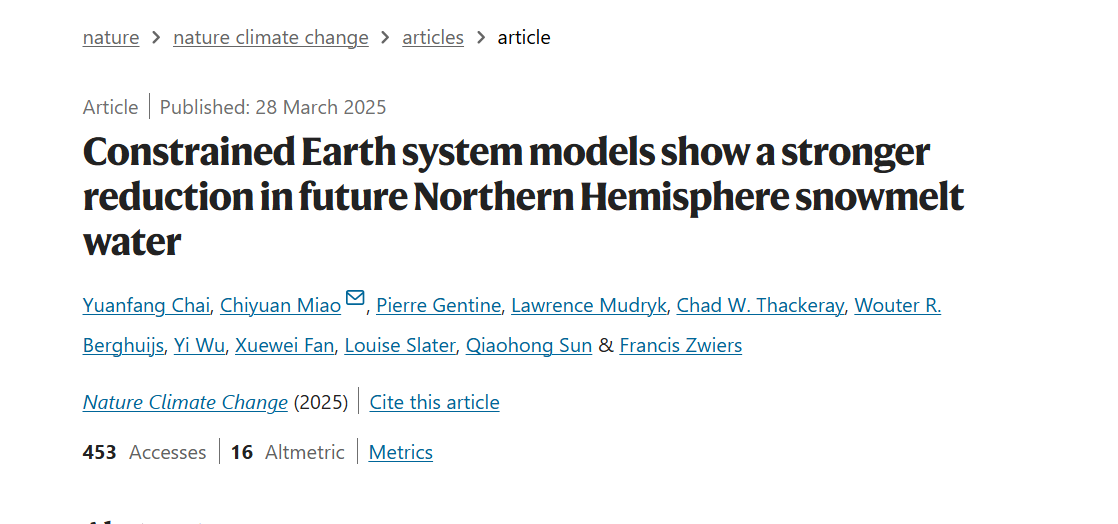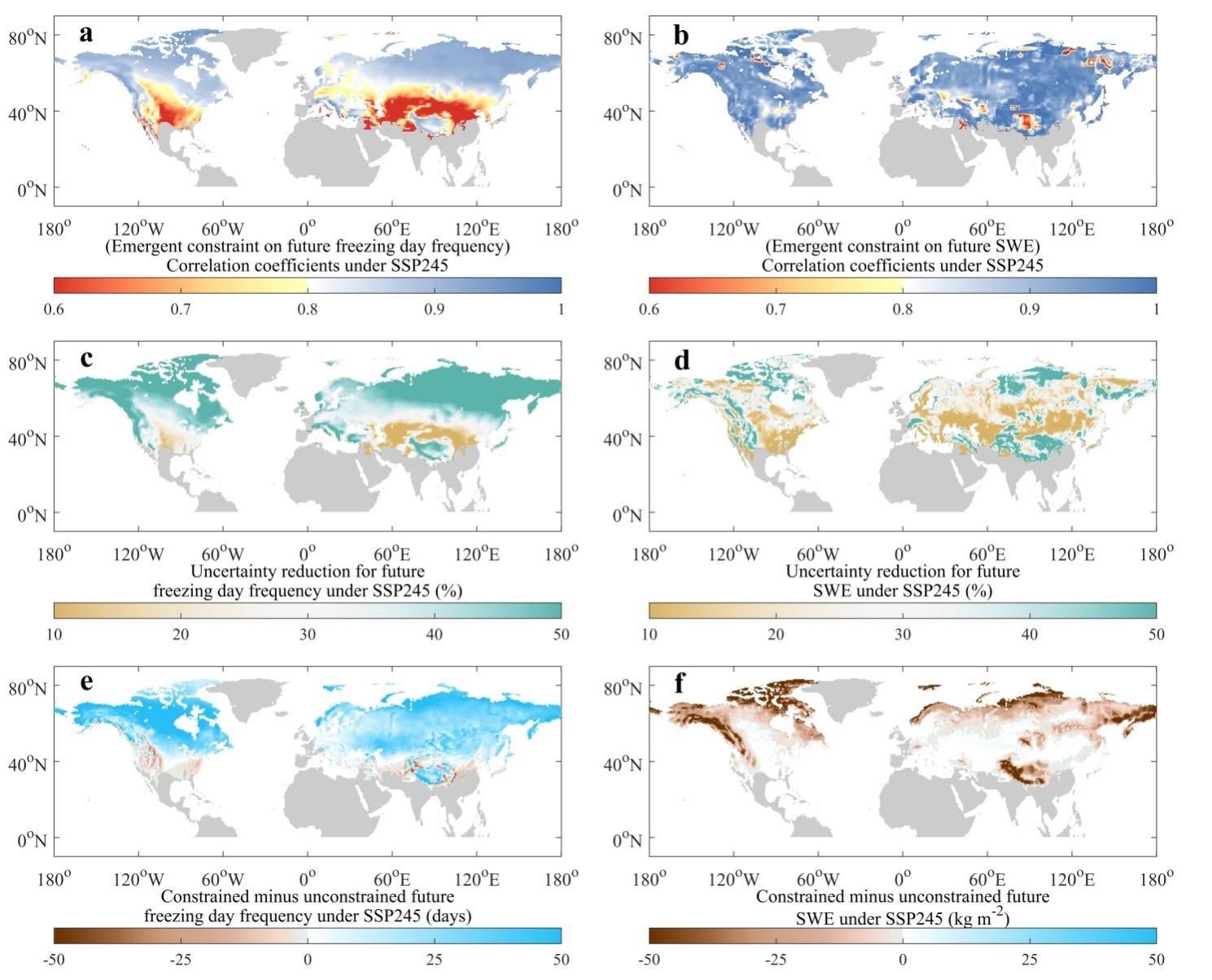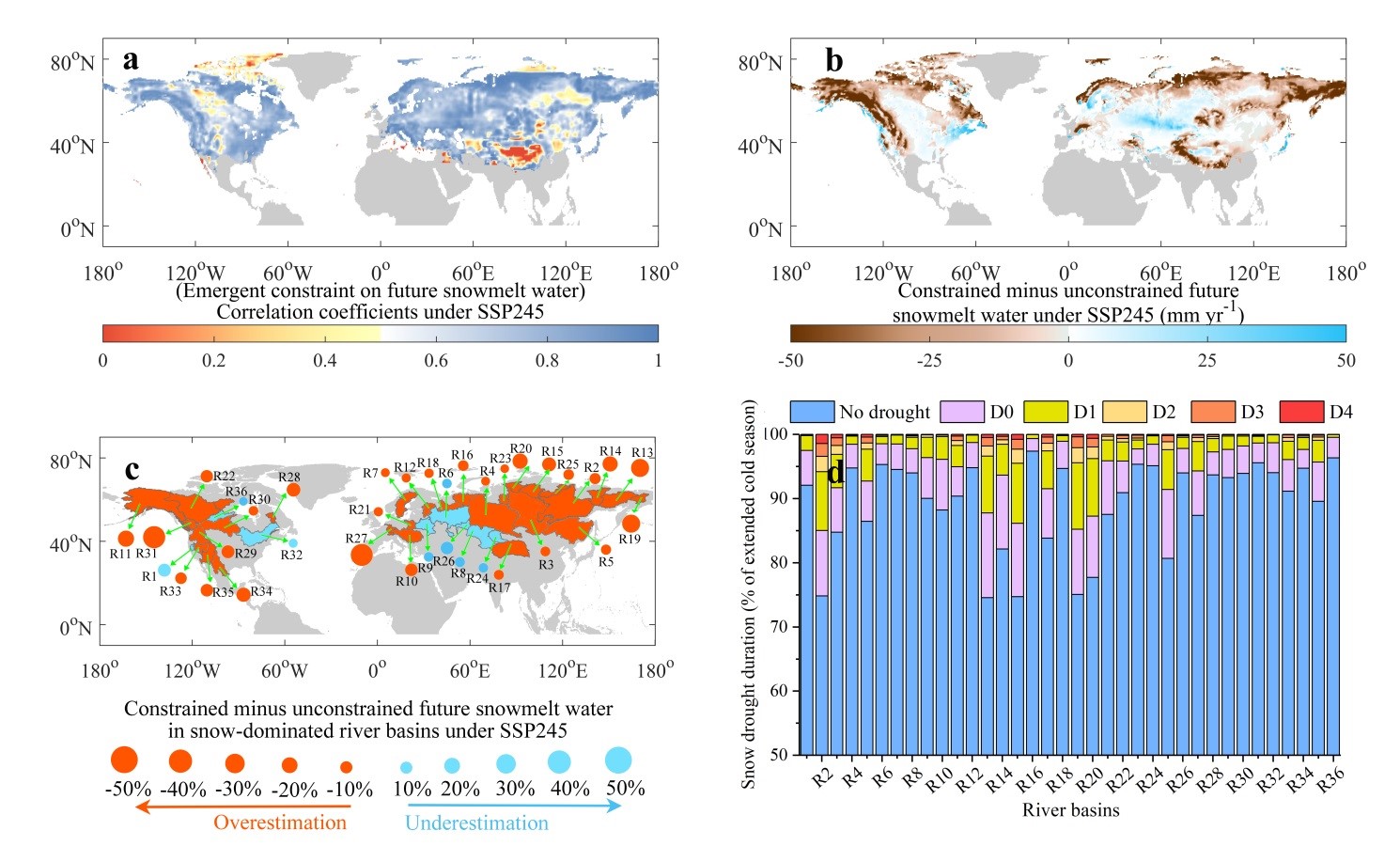Professor Miao Chiyuan's team from the Faculty of Geographical Sciences published their research findings in Nature Climate Change
Terrestrial water is stored as snow in winter, and subsequently melts partially or completely during the spring and summer due to warming temperatures, releasing water through infiltration, which recharges soil moisture, or as runoff, which increases streamflow. As the largest freshwater storage reservoir, snowmelt water is critical for domestic water supply, agriculture, hydroelectric power and ecosystems. Snowmelt water in the Northern Hemisphere (NH) accounts for approximately one-third of all irrigation water, and supports one-fourth of global gross domestic product and approximately one-sixth of Earth’s population. Decreases in snow volumes caused by global warming are greatly affecting the hydrological cycle and are therefore often cited as a key threat to irrigated agriculture and food security.
Recent studies have found considerable uncertainties in snow modelling across Earth system models (ESMs). These uncertainties underpin a ‘snow water resources paradox’ in the context of surface warming. This leads to confusion about future snow amounts as the climate warms, undermining estimations of future snow water resources and the ability of water management policies to address potential snow water resource shortages.
Based on this, Professor Miao Chiyuan's team from the Faculty of Geographical Sciences proposed the Constrained Earth system models.These spatially constrained results help to better support the formulation of regional policies for water resources management that address local climate warming and environmental protection.
This achievement was recently published in the journal of Nature Climate Change titled "Constrained Earth system models show a stronger reduction in future Northern Hemisphere snowmelt water".

The abstract of the paper is as follows:
Although Earth system models (ESMs) tend to overestimate historical land surface warming, they also overestimate snow amounts in the Northern Hemisphere. By combining ground-based datasets and ESMs, we find that this paradoxical phenomenon is predominantly driven by an overestimation of light snowfall frequency. Using spatially distributed emergent constraints, we show that this paradox persists in mid- (2041-2060) and long-term (2081-2100) projections, affecting more than half of the Northern Hemisphere’ s land surface. ESMs underestimate the frequency of freezing days by 12-19% and overestimate snow water equivalent by 28-34%. Constrained projections indicate that the raw ESM outputs overestimate future Northern Hemisphere snowmelt water by 12-16% across 53-60% of the Northern Hemisphere’ s land surface. This snowmelt water overprediction implies that the amount of water available in the future for agriculture, industry, ecosystems and domestic use may be lower than unadjusted ESM projections suggest.



Full text link:


